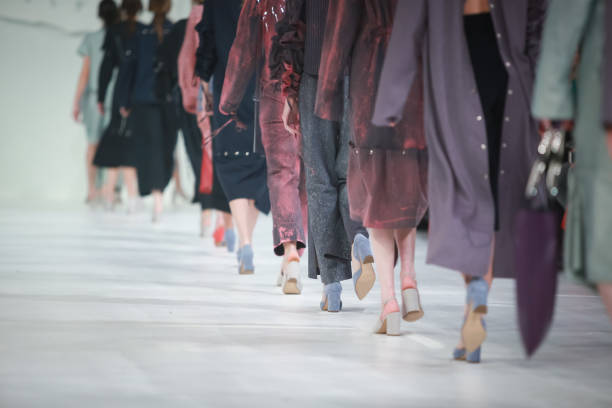The Future Fashion of the Apparel Industry?
With the
growing emphasis on sustainability and conservation in today’s society, the fashionindustry has been increasingly scrutinized for its ecological footprint. In
response to this trend, sustainable fashion has emerged as a rapidly evolving
and highly significant movement. But is sustainable fashion merely a buzzword,
or could it genuinely be the future of the industry?
Sustainable
fashion represents a comprehensive approach to fashion, embracing
environmentally-friendly processes and ethical practices from production to
consumption. It considers the full lifecycle of a garment, pushing for the
responsible use of resources, ethical treatment of workers, and conscious
consumption by customers.
The State
of Fashion's Environmental Impact
The fashion
industry has long been identified as one of the largest contributors to
environmental damage. It’s estimated to produce around 10% of global carbon
emissions, and consumes vast quantities of water in the production process.
Moreover, waste generation is a significant problem. Approximately 85% of
textiles produced globally end up in landfills every year, with fastfashion practices amplifying this issue.
In the world of hues and silhouettes,
Lies a language silent yet loud,
A symphony woven in threads and
buttons,
A canvas that makes us proud.
In the heart of glamour, beyond the
façade,
Lies the rhythm of seams and
stitches,
A kaleidoscope of trends and
textures,
A panorama of plumes and riches.
Fabrics whisper tales of the loom,
Patterns echo of lands afar,
Colors sing of seasons in bloom,
Fashion, you are our shining star.
A pearl draped neckline in a summer's
dream,
Velvet darkness kissing the
moonlight's seam,
A whirl of taffeta in the winter's
gleam,
Fashion, you're the artist's supreme
theme.
A vintage brooch, a modern twist,
A classic little black dress,
In couture's call, we cannot resist,
In fashion, we express.
From the
petite point of a well-placed pin, To the bold bravado of a vibrant hem, Fashion's
not just about the outward spin, But the inner rhythm of the wearable gem.
A dash of
hope in a threadbare coat, Strength in the weave of a warrior's cloak, Joy in
the jingle of a jester's note, Fashion, in you, emotions float.
Unseen, we
speak in style's soft prose, In the whisper of lace, in the rebellion of rose,
In the statement of stripes, in the peace the white pose, In fashion, the
language of the soul composes.
So here's to
fashion, our silent speech, Our armor, our canvas, our far-reaching reach, In
the cut, in the cloth, in every stitch, Fashion, you're the poetry we each
beseech.
The
Emergence of Sustainable Fashion
To counter
these adverse effects, sustainable fashion presents a viable solution. It
involves sourcing eco-friendly materials, prioritizing fair labor practices,
reducing waste, and promoting a shift from 'fast' to 'slow' fashion.
Sustainable
materials are a critical component. These include organic cotton, hemp,
recycled materials, and other natural or renewable fibers that are less harmful
to the environment. Innovative technologies have also given birth to fabrics
like 'Piñatex,' derived from
pineapple leaf fibers, and 'Mylo,' a
leather alternative made from mycelium, the root structure of mushrooms.
The
Economic Viability of Sustainable Fashion
While
skeptics argue that sustainable
fashion is costly and might not appeal to price-sensitive consumers, recent
trends suggest otherwise. More and more consumers are demanding transparency
and expressing willingness to pay a premium for sustainable products. Brands
that embrace sustainability often find it can enhance their brand image and
foster customer loyalty.
Research
indicates that the sustainable fashion market is projected to reach $102.43
billion by 2028, pointing to its growing commercial potential.
The Role
of Consumers
Arguably,
the most potent force driving the growth of sustainable fashion is consumer
behavior. With increasing awareness about climate change and social issues,
consumers are becoming more conscious about their purchases.
The notion
of 'slow fashion,' which promotes
buying less and choosing quality over quantity, has gained traction. People are
also embracing practices like buying secondhand, upcycling, recycling, or
renting clothes, significantly reducing waste and the demand for new clothing
production.
The Road
Ahead
Despite
these promising trends, challenges persist. Greenwashing, where brands mislead
consumers about their environmental practices, is a significant concern.
Additionally, sustainable options still represent a small fraction of the total
fashion market.
However, as
consumers, manufacturers, and regulators continue to prioritize sustainability,
there's hope for change. The EU's recent proposal to ban the landfilling and
incineration of unsold consumer goods is an example of policy changes that
could push the industry towards sustainability.
While the
journey is undoubtedly complex, the alignment of economic, societal, and
environmental incentives suggests that sustainable fashion might indeed be the
future.
In
conclusion, sustainable fashion represents a revolution, integrating
environmental concerns and social responsibility into the fashion industry's
heart. If this momentum continues, it’s more than a passing trend – it’s the
dawn of a new era in fashion.
Muslim
Fashion
In many Muslim
communities, both men and women follow guidelines about modesty outlined in
Islamic teachings. These guidelines often translate into certain styles and
types of clothing.
1.
Modesty:
Modesty is a significant principle in Islam. The Quran advises both men and
women to dress modestly, which is typically interpreted as covering most parts
of the body. The specifics can vary between cultures and individuals.
2.
Hijab: Many
Muslim women wear a hijab, a headscarf that covers the hair, neck, and often
the shoulders. There are different types of hijabs, including the niqab, which
covers the entire body and face, leaving only the eyes visible, and the burqa,
which covers the whole body from head to feet with a mesh screen to see
through.
3.
Clothing:
Traditional Muslim men's clothing might include items like the thobe (a loose,
long-sleeved, ankle-length garment) or the taqiyah (a short, rounded skullcap).
Women's clothing can vary widely but often includes garments like the abaya (a
loose, full-length robe) or the salwar kameez (a pair of loose trousers
narrowed at the ankle, topped by a tunic or shirt).
4.
Contemporary Muslim Fashion: Many modern Muslims combine their faith's principles with
contemporary fashion trends, resulting in a burgeoning market for "modest
fashion." These styles maintain the modesty guidelines while incorporating
current styles, colors, and patterns.
Non-Muslim
Fashion
Non-Muslim
fashion represents a broad range of styles and traditions from around the
world. It's challenging to encapsulate "non-Muslim" fashion because
it encompasses such a vast array of cultures and personal styles. However, some
general trends might include:
1.
Variety: There
is a vast range of clothing styles and types in non-Muslim fashion, reflecting
the immense diversity of cultures and personal preferences worldwide. Clothing
may be loose or form-fitting, simple or ornate, casual or formal.
2.
Modesty:
Interpretations of modesty can vary widely. In some cultures, it's common to
show more skin than would typically be shown in traditional Muslim dress, such
as wearing short skirts, sleeveless tops, or swimsuits. However, other cultures
and individuals also place a high value on modesty, and their fashion choices
reflect that.
3.
Contemporary Trends: Non-Muslim fashion is influenced by a variety of factors, including
popular culture, the fashion industry, historic trends, and individual
creativity. There is a continual evolution of styles, with some trends having a
global impact.
It's
important to note that there's a considerable amount of overlap and exchange
between Muslim and non-Muslim fashion. Fashion designers and individuals alike
draw inspiration from a variety of sources, leading to a dynamic, global
fashion industry with an increasingly blurred line between different fashion
"categories".






what a beautiful are you explained
ReplyDelete